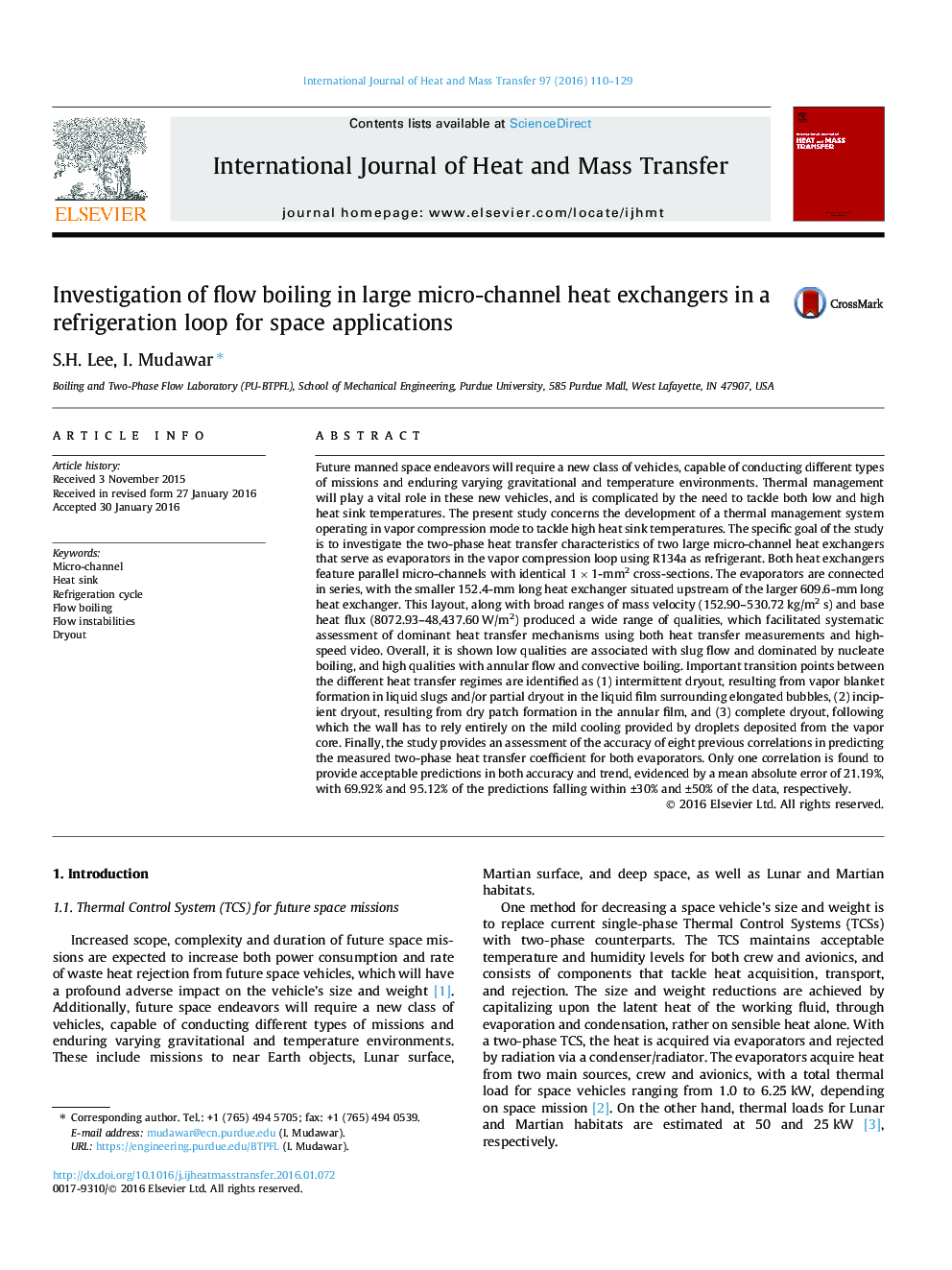| کد مقاله | کد نشریه | سال انتشار | مقاله انگلیسی | نسخه تمام متن |
|---|---|---|---|---|
| 7055537 | 1458045 | 2016 | 20 صفحه PDF | دانلود رایگان |
عنوان انگلیسی مقاله ISI
Investigation of flow boiling in large micro-channel heat exchangers in a refrigeration loop for space applications
ترجمه فارسی عنوان
بررسی جریان جوش در مبدل های حرارتی بزرگ در کانال های خنک کننده برای برنامه های کاربردی فضایی
دانلود مقاله + سفارش ترجمه
دانلود مقاله ISI انگلیسی
رایگان برای ایرانیان
کلمات کلیدی
میکرو کانال، سینک حرارتی، چرخه یخچال، جریان جوش، ناپایداری جریان خشک کردن،
موضوعات مرتبط
مهندسی و علوم پایه
مهندسی شیمی
جریان سیال و فرایندهای انتقال
چکیده انگلیسی
Future manned space endeavors will require a new class of vehicles, capable of conducting different types of missions and enduring varying gravitational and temperature environments. Thermal management will play a vital role in these new vehicles, and is complicated by the need to tackle both low and high heat sink temperatures. The present study concerns the development of a thermal management system operating in vapor compression mode to tackle high heat sink temperatures. The specific goal of the study is to investigate the two-phase heat transfer characteristics of two large micro-channel heat exchangers that serve as evaporators in the vapor compression loop using R134a as refrigerant. Both heat exchangers feature parallel micro-channels with identical 1 Ã 1-mm2 cross-sections. The evaporators are connected in series, with the smaller 152.4-mm long heat exchanger situated upstream of the larger 609.6-mm long heat exchanger. This layout, along with broad ranges of mass velocity (152.90-530.72 kg/m2 s) and base heat flux (8072.93-48,437.60 W/m2) produced a wide range of qualities, which facilitated systematic assessment of dominant heat transfer mechanisms using both heat transfer measurements and high-speed video. Overall, it is shown low qualities are associated with slug flow and dominated by nucleate boiling, and high qualities with annular flow and convective boiling. Important transition points between the different heat transfer regimes are identified as (1) intermittent dryout, resulting from vapor blanket formation in liquid slugs and/or partial dryout in the liquid film surrounding elongated bubbles, (2) incipient dryout, resulting from dry patch formation in the annular film, and (3) complete dryout, following which the wall has to rely entirely on the mild cooling provided by droplets deposited from the vapor core. Finally, the study provides an assessment of the accuracy of eight previous correlations in predicting the measured two-phase heat transfer coefficient for both evaporators. Only one correlation is found to provide acceptable predictions in both accuracy and trend, evidenced by a mean absolute error of 21.19%, with 69.92% and 95.12% of the predictions falling within ±30% and ±50% of the data, respectively.
ناشر
Database: Elsevier - ScienceDirect (ساینس دایرکت)
Journal: International Journal of Heat and Mass Transfer - Volume 97, June 2016, Pages 110-129
Journal: International Journal of Heat and Mass Transfer - Volume 97, June 2016, Pages 110-129
نویسندگان
Seunghyun Lee, Issam Mudawar,
